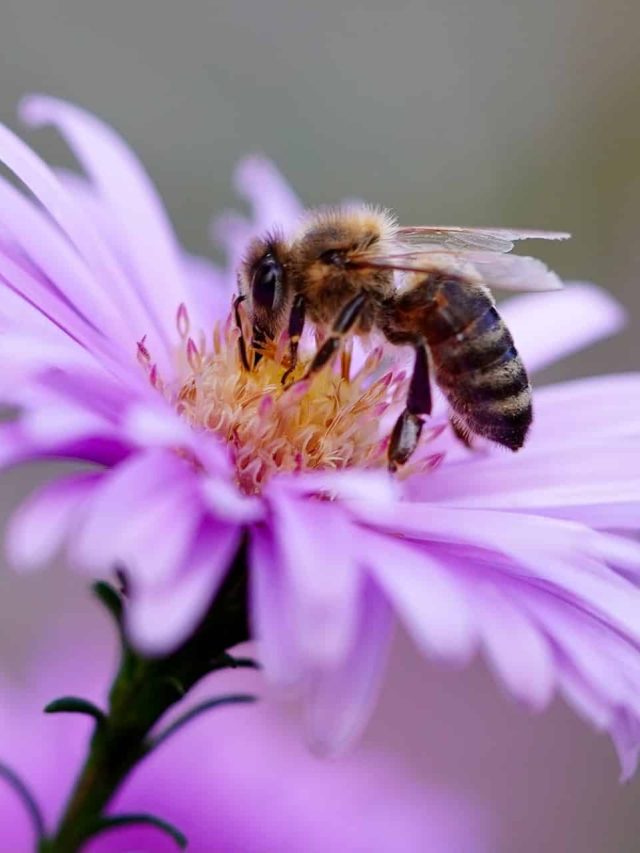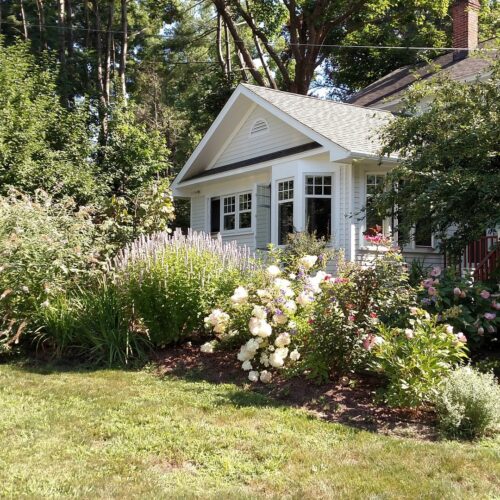For those with bee allergies or flying insect phobias, this is a guide to plants that don’t attract bees. Your garden should feel like a place of peace, and filling it with the wrong plants can turn it into a waking nightmare. While bees provide the incredibly important service of pollinating our plants and flowers, you can still create a thriving bee-free oasis in your backyard.
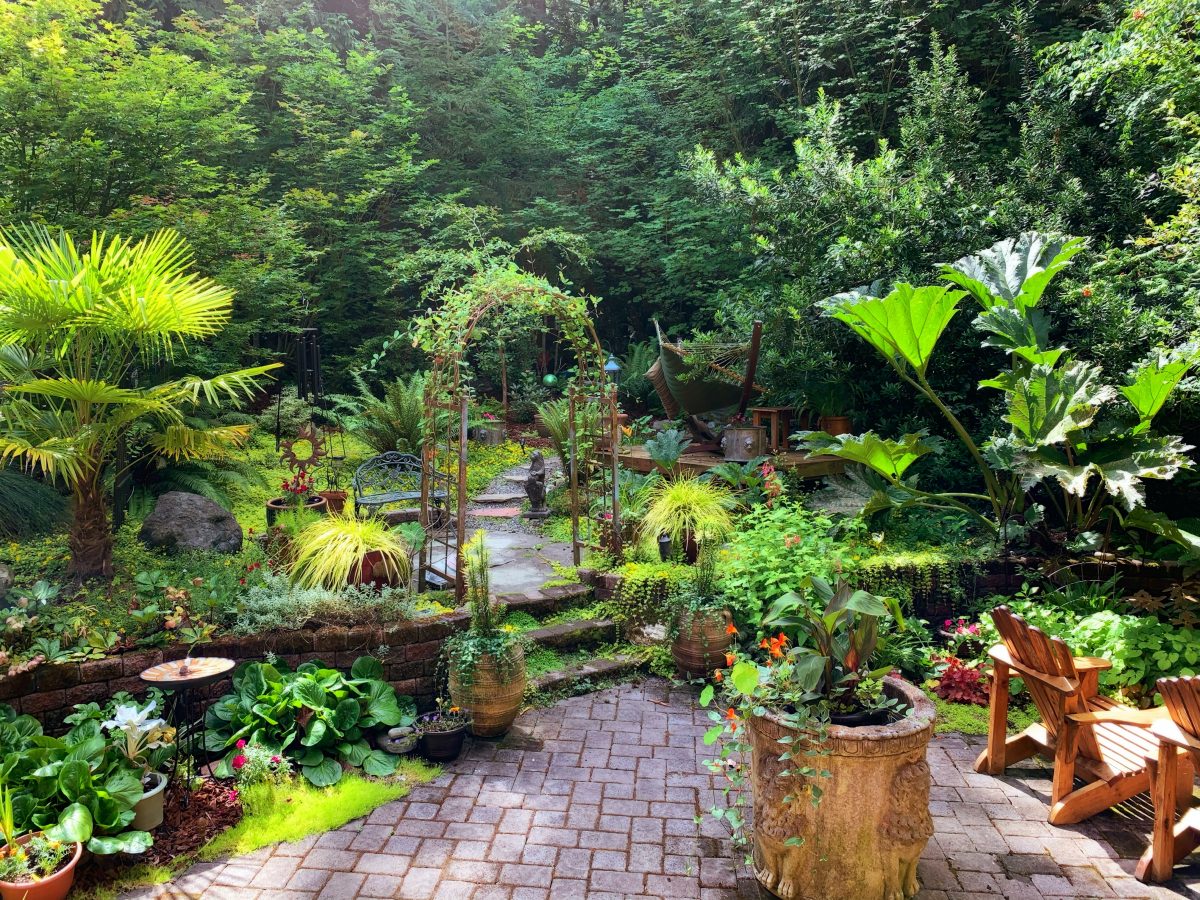
Even if you have an understandable reason for fearing bees (such as a serious allergy), it is never a good idea to plant plants that are outright poisonous to bees. Planting plants that simply repel bees is a better option. What’s more, you may be able to find flowers that are uninteresting to bees, while attracting hummingbirds and butterflies.
For more methods beyond plants, check out this companion article on How To Keep Bees Away.
Table of Contents
What do bees look for in a flower?
In order to curate a beautiful garden without bees, it’s good to understand what bees are attracted to, so you can select the appropriate plants from your local nursery.
Trigger warning: bee photos ahead.
Bees notice every characteristic of a plant, from its smell and shape to, of course, its color. Each of these factors can be the reason why a bee is more attracted to one plant over another. Let’s discuss these main characteristics in some detail.
Color
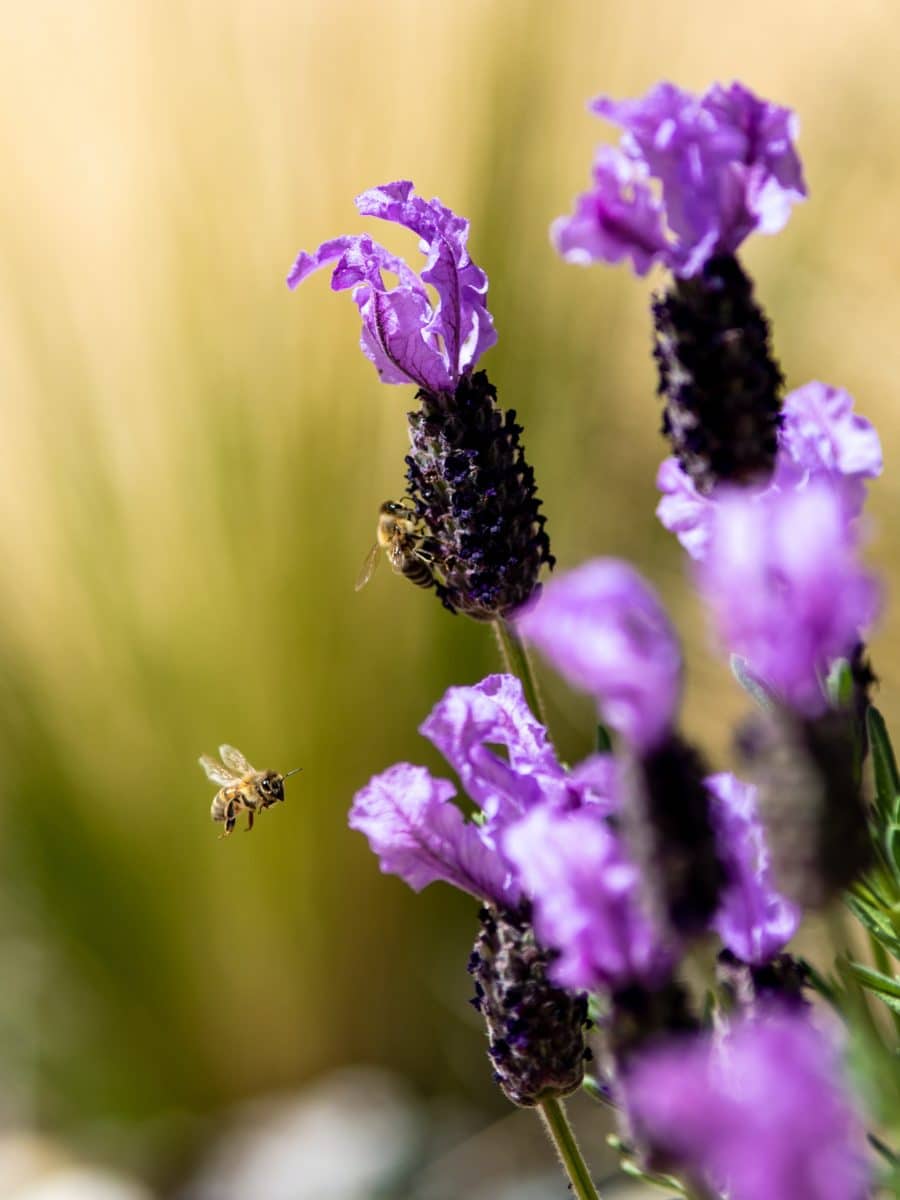
Bees have two large compound eyes that can see ultraviolet light (not visible to humans), blue, green, and “bee’s purple,” a combination of yellow and ultraviolet light. Because they lack a photoreceptor for the color red, red flowers appear green to bees and blend in with the other foliage. Some red flowers, however, can stand out to bees because of their ultraviolet markings, such as pansies and beebalm.
That said, the best way to avoid attracting bees according to entomologists is to embrace the red-hued blooms and avoid purple, violet, or blue flowers.
Fun Fact: Bees are able to see color five times faster than humans.
Smell
Bees have an extraordinary sense of smell. Honey bees specifically have a much better sense of smell than their tiny buzzing counterparts, fruit flies and mosquitoes. Foraging honey bees may be presented with a large variety of wildflowers and be able to distinguish between each separate species. This also means they have the ability to be particular about what smells they do and do not like.
Flowers that smell good to bees:
- Lavender
- Hyssop
- Chamomile
- Beebalm
- Sage
- Basil
- Rosemary
- Thyme
Flowers that smell bad to bees:
- Mexican marigolds
- Chrysanthemums
- Cinnamon
- Geranium
- Cucumber
- Citronella
Nectar and pollen stores
A bee’s primary goal for visiting a flower is to gather nectar and pollen and bring it back to the hive. As such, bees love flowers with rich nectar and pollen stores, especially when the nectar is easily accessible. There are a few ways that bees know which flowers are worth visiting. Flowers provide “nectar guides,” which consist of dark lines and UV light patterns on the flower pedals that serve as a sort of “landing strip” for bees. These markings encourage bees to land and investigate that flower’s nectar stores.
Each of these cultivars have showy double flowers which, while attractive to humans, make it more difficult for bees to access nectar and pollen:
- Double Impatiens
- Double Heronsbill
- “Barlow” Columbine
- Double Zinnia
- Double Petunia
Flower Shape
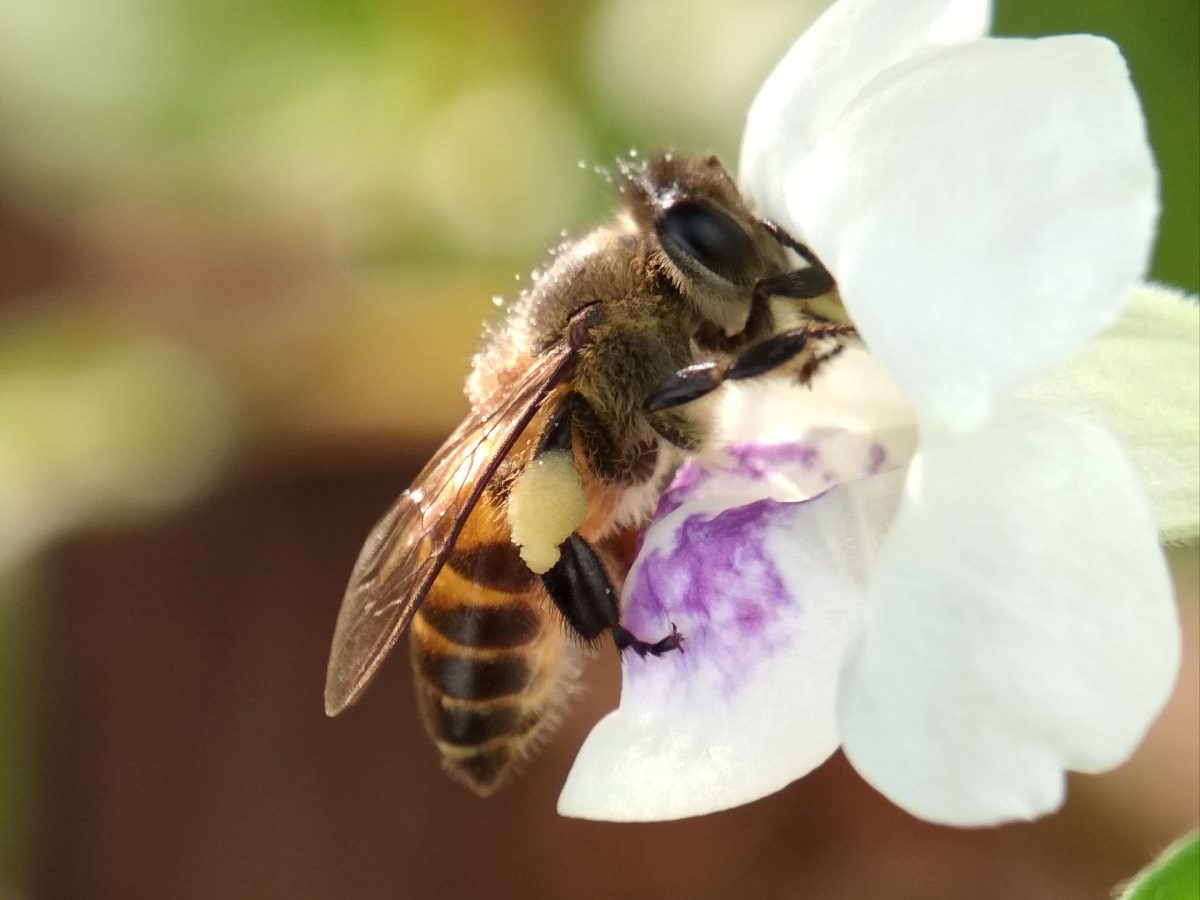
Many bees will have a preferred shape and size of the flowers that they frequent most often. Honey bees will visit smaller flowers because of their relatively small body size, while larger bees will stick to larger flowers that can support their body weight as they gather nectar.
As for flower shape, many bees will seek out flowers with a wide landing platform (pedal), and shallow, tubular corollas (the center of the flower where nectar is stored). The length of the bee’s tongue will usually determine whether they can visit flowers with deep corollas or only those with easily-accessible nectar, such as daisies.
If you are trying to avoid bees, stick to those flowers with a trumpet shape and long corollas, such as narcissus, amaryllis, honeysuckle and buttercups. Most bees will have a hard time accessing nectar in these flowers, and you will get the added benefit of attracting pollinators with long tongues such as butterflies and hummingbirds.
Plants That Keep Bees Away
There is somewhat of a paradox that exists online when it comes to the plants that either attract or repel bees. If you search for either of these topics, you will likely find the same plants coming up on both lists. How is that possible?
In the case of fragrant plants like basil, rosemary, mint and eucalyptus, it’s true that bees can be deterred by the pure essential oils present in these plants while simultaneously being attracted to their flowers. Here are the plants that are most likely to keep bees away from your yard.
Cucumber

We all know cucumber adds the perfect crunch to any salad, but did you know this plant also keeps bees, wasps, and even ants away? The reason has yet to be precisely pinpointed, but people assume that these insects do not like the bitterness of cucumber peels due to their cucurbitacin content.
Growing cucumber in your garden means you also get to enjoy your own home-grown veggies but make sure they receive plenty of moisture throughout the summer. If you do not want to grow cucumbers yourself, you can simply buy some from your local farmer’s market and scatter cucumber peels around the yard.
Geraniums
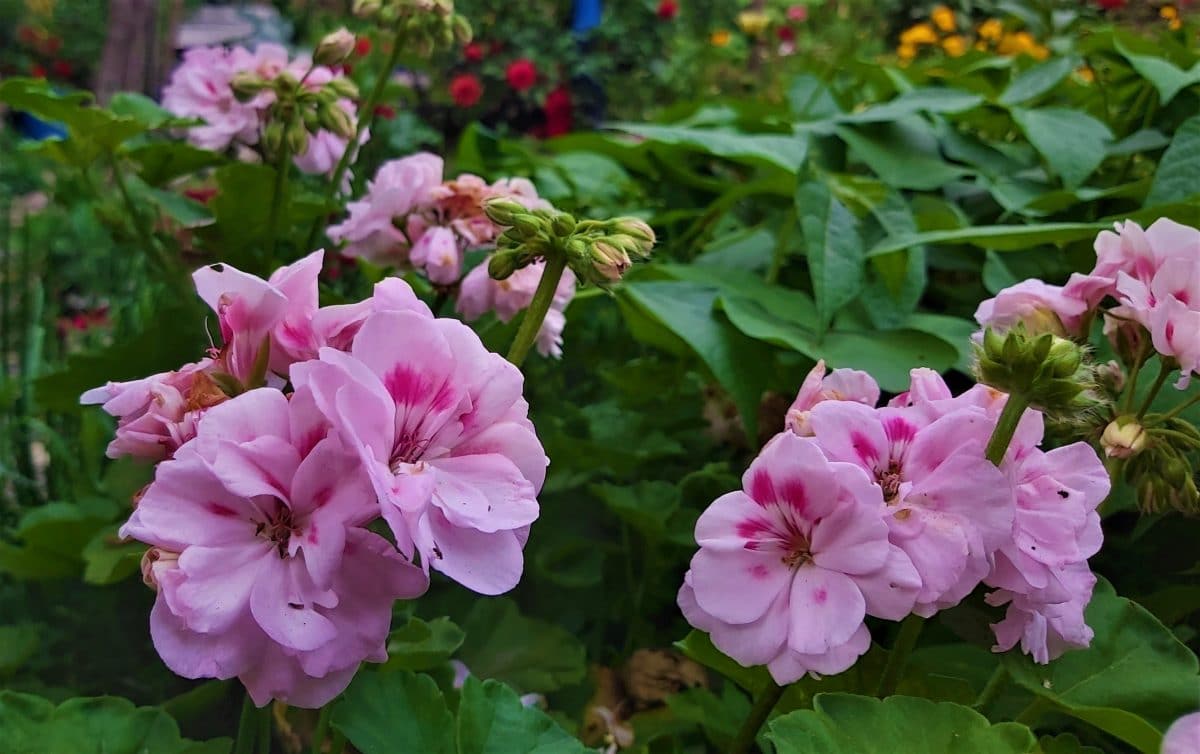
Red geraniums prove to be fairly useful in keeping bees away. Because bees can’t see the color red, red flowers appear green to them and simply blend in with the surrounding foliage. On top of that, these flowers contain very little pollen and have a citronella-like scent that the stinging insects are not fans of. Stay away from blue and violet geraniums, and provide these flowers with about 4-6 hours of sun each day.
Wormwood
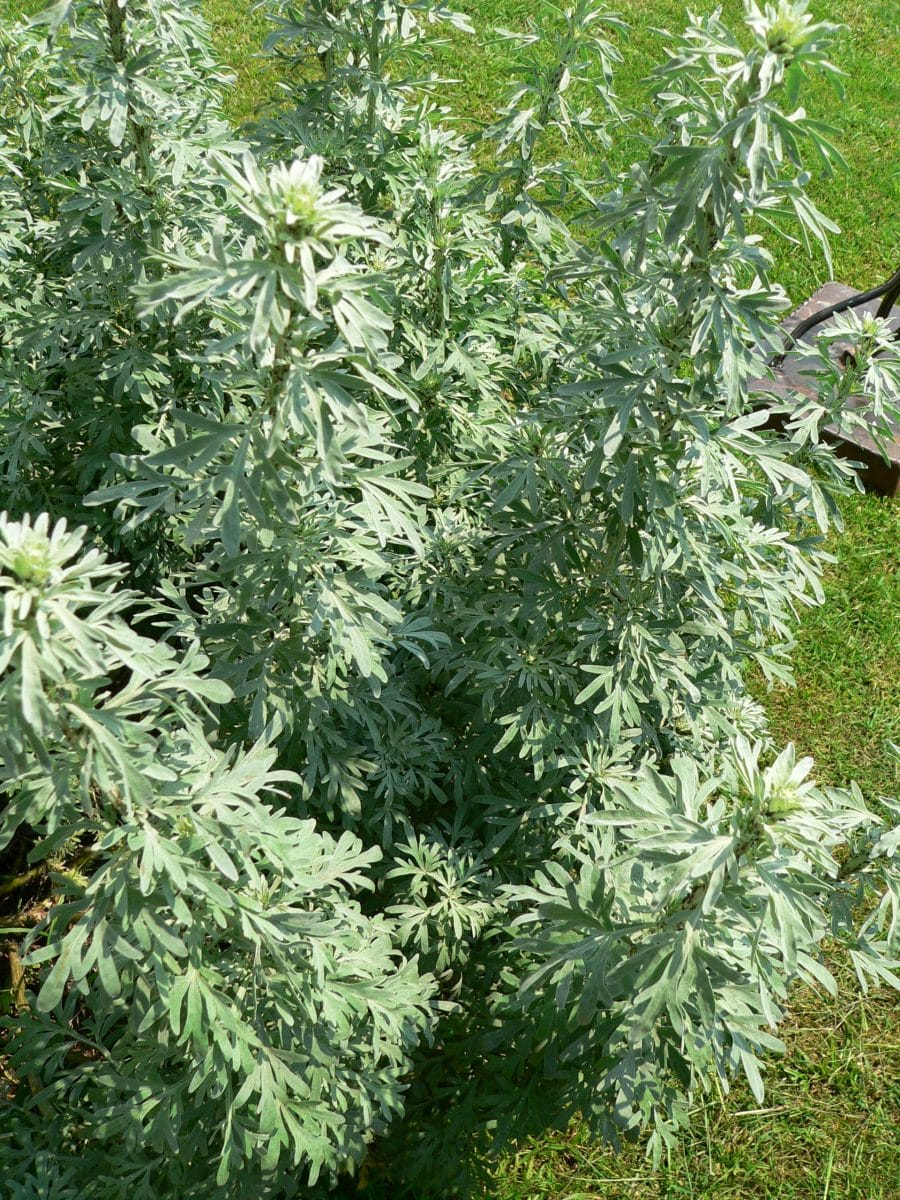
Wormwood emits a pungent scent that repels a variety of creatures including bees, deer, ticks and mites. The chemicals found in wormwood are so potent that farmers sometimes use it to ward off fleas that wreak havoc in chicken coops. This medicinal herb contains absinthe and thujone, substances that are toxic to insects, as well as humans in large doses. When used medicinally, however, this feathery plant can help with intestinal issues and gall bladder disease. It is also used to make alcoholic beverages such as absinthe and vermouth. Wormwood can kill other plants in close proximity, so be careful if you are thinking of planting this near a garden.
Marigolds
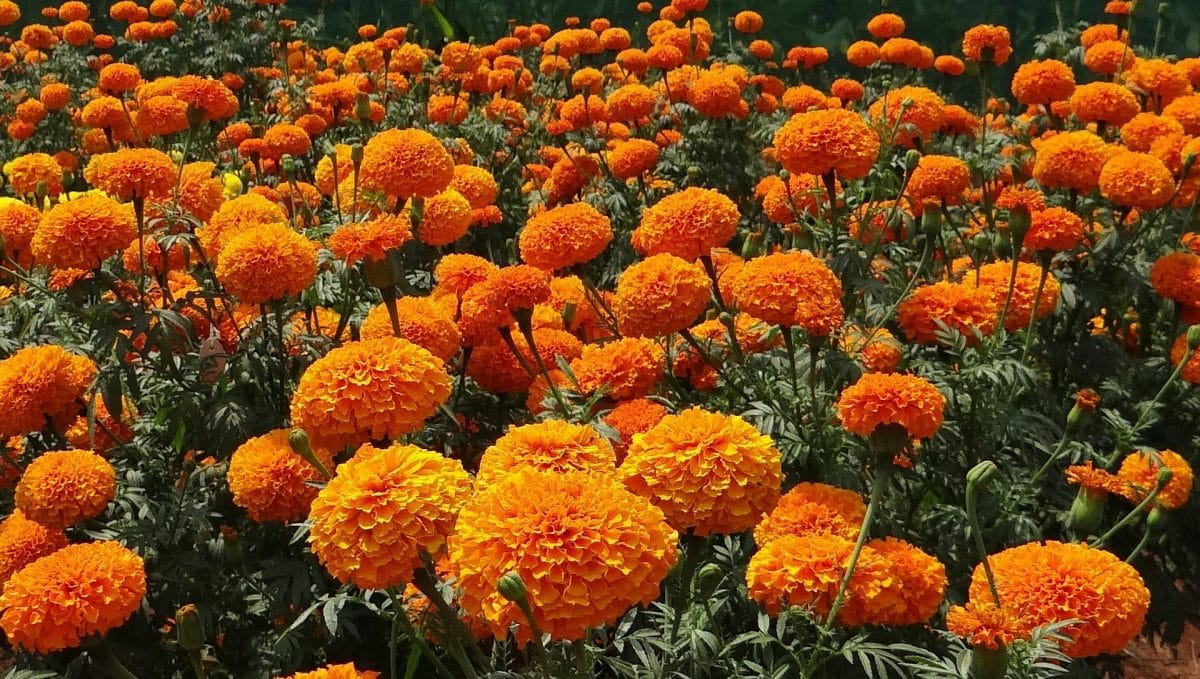
Red varieties of marigold are a decent option for keeping bees away but don’t expect them to deter a large population of bees. Although not based on scientific research, it has been observed that marigolds are unattractive to insects because of their pungent aroma. Marigolds also have very little pollen, so bees have almost no reasons to visit, even if they are attracted to their yellow and orange colors. Other flowers in the area with more easily accessible pollen will take precedence. These full and fluffy flowers make lovely additions to any landscape because of their bright colors and long blooming season.
Citronella
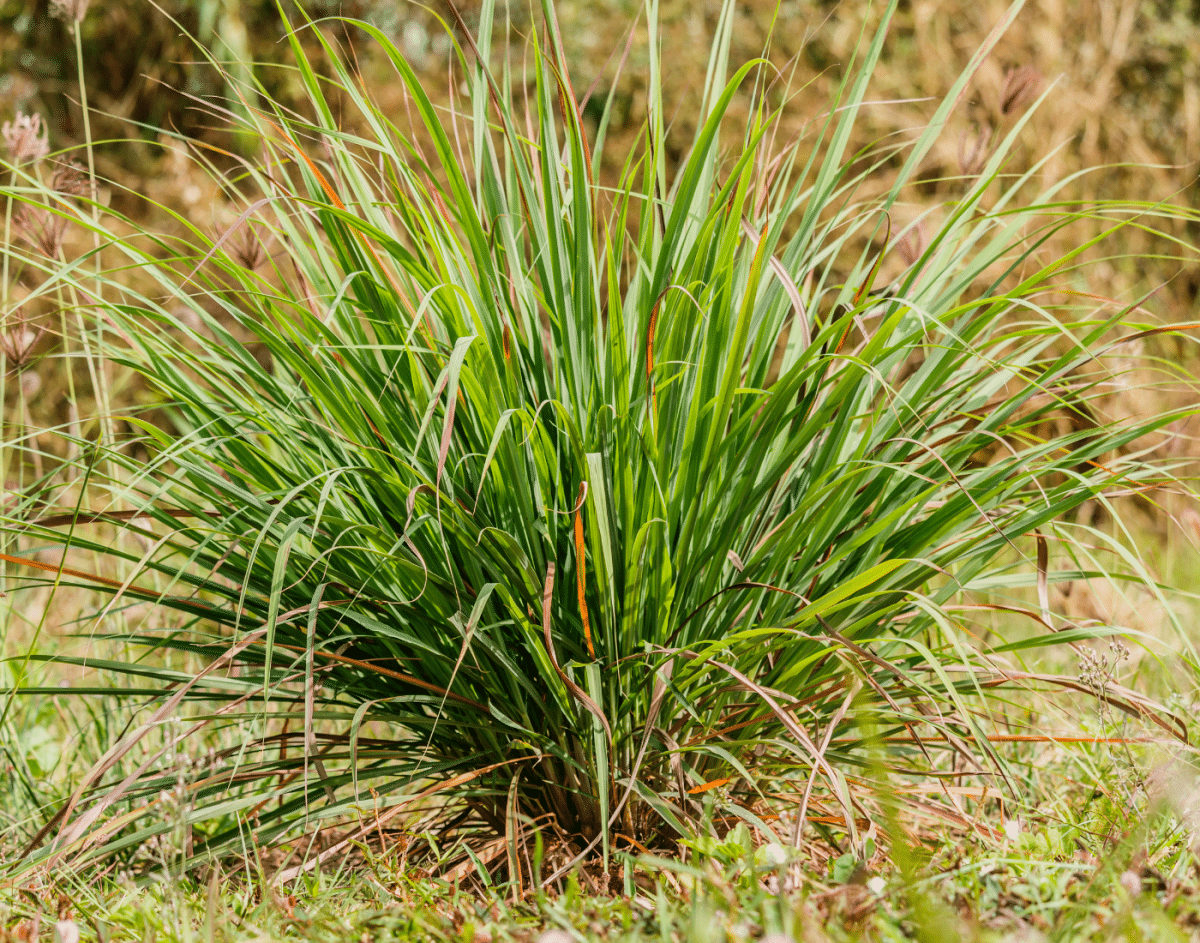
Citronella is most commonly known for keeping away mosquitos, but it has been known to deter other insects as well, including bees. Unfortunately, the most common citronella plant displayed in nurseries is not true citronella, but a type of geranium that emits a similar lemony scent. Despite how they are marketed, these false citronella plants have proven ineffective against deterring mosquitos, and as such, will likely not deter bees.
True citronella, used primarily for warding off mosquitos, is distilled from the Asian grass, Cymbopogon nardus. Native to Sri Lanka, citronella grass is an exotic tropical grass that requires plenty of water and cannot handle temperatures below 32 degrees. Although this grass isn’t considered invasive, it is fast-growing and can uproot nearby plants. For this reason, and because it is susceptible to cold, it is best to contain in a pot so that you can control its growth and bring it inside during the winter. This plant should not be confused for the closely related lemongrass plant (Cymbopogon citratus), which is actually known to attract bees, and is sometimes even used to lure them into a hive.
If you aren’t keen on planting this grass, simply dabbing diluted citronella oil on plant leaves or outdoor surfaces may do the trick.
Feverfew
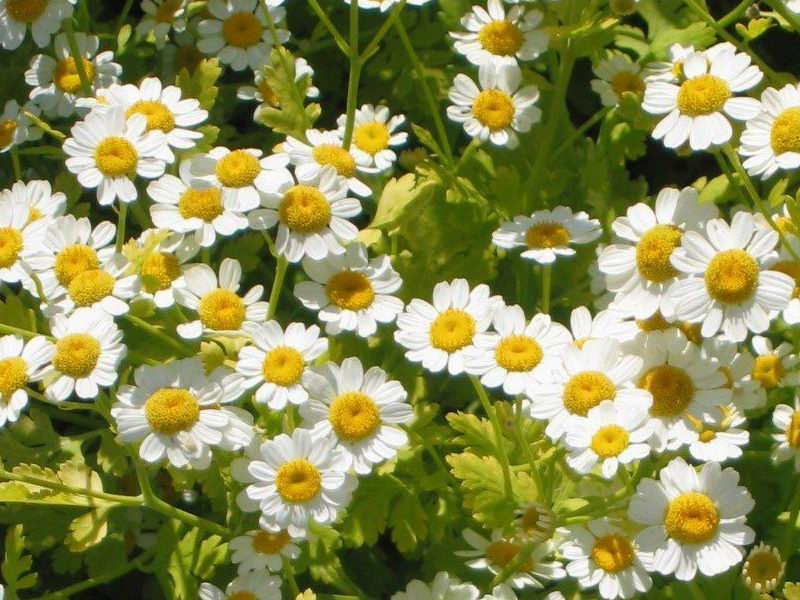
Feverfew is a perennial that grows as tall as three feet and closely resemble daisies. Widely used for medicinal purposes, this potent flower produces a strong scent (slightly citrusy) that bees hate. Unlike other flowers that bees simply do not prefer, this self-pollinating flower actively repels bees. As such, it should not be planted near vegetables or any flowers that you need to be pollinated by bees. Exercise caution if you are planning to utilize feverfew’s medicinal properties, as the natural compounds present in the flower can be toxic if ingested in the wrong dosage or if used incorrectly.
Roses
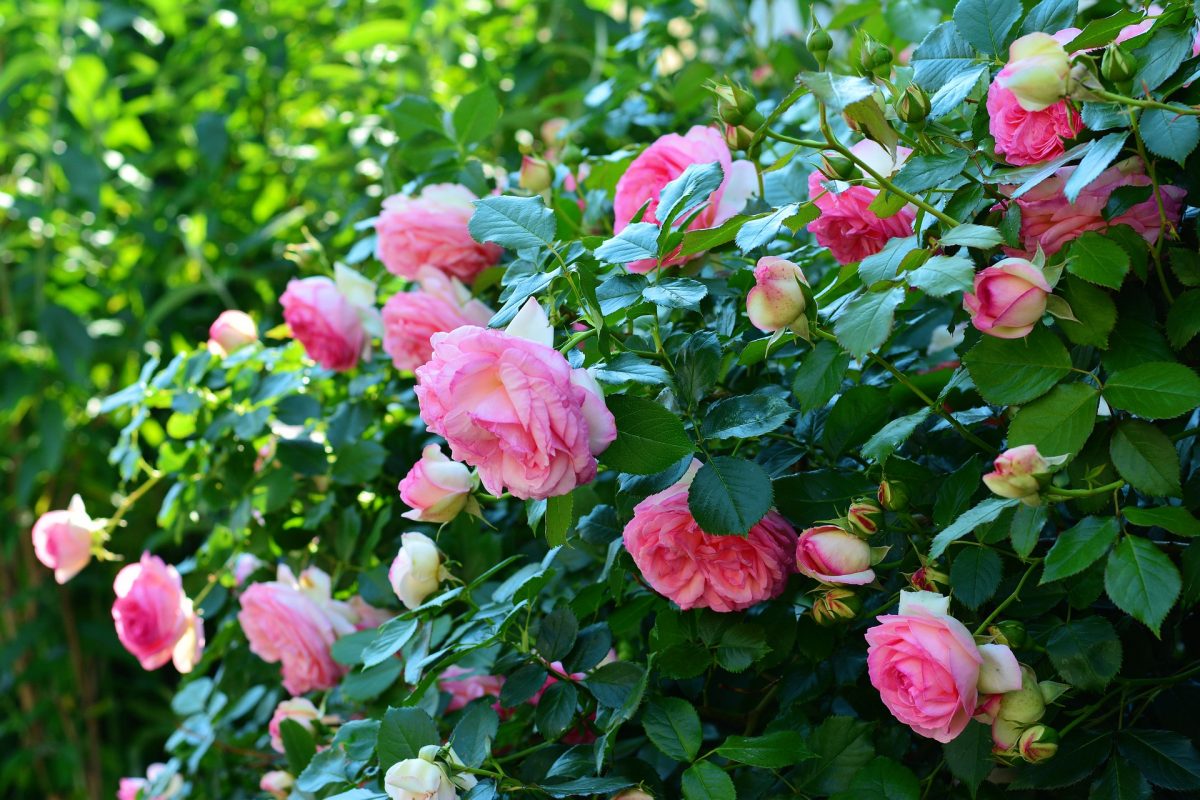
Bees love most roses, but the one variety of roses that bees tend to avoid is called Knock Out roses. These roses are unappealing to bees because of their limited pollen and nectar stores and difficult-to-access pedal arrangement. This variety comes in a range of colors but, as we learned before, red roses are the safest bet because bees cannot see the color red.
If you are going to try your luck at other rose varieties, go for the hybridized flowers in red or white, and be sure to choose an unscented variety. Highly hybridized flowers tend to have a less intense fragrance and less nectar than other flowers, thus less reason to attract bees.
These are all roses which will attract bees – if your rose flowers look like this, you will want to avoid them:
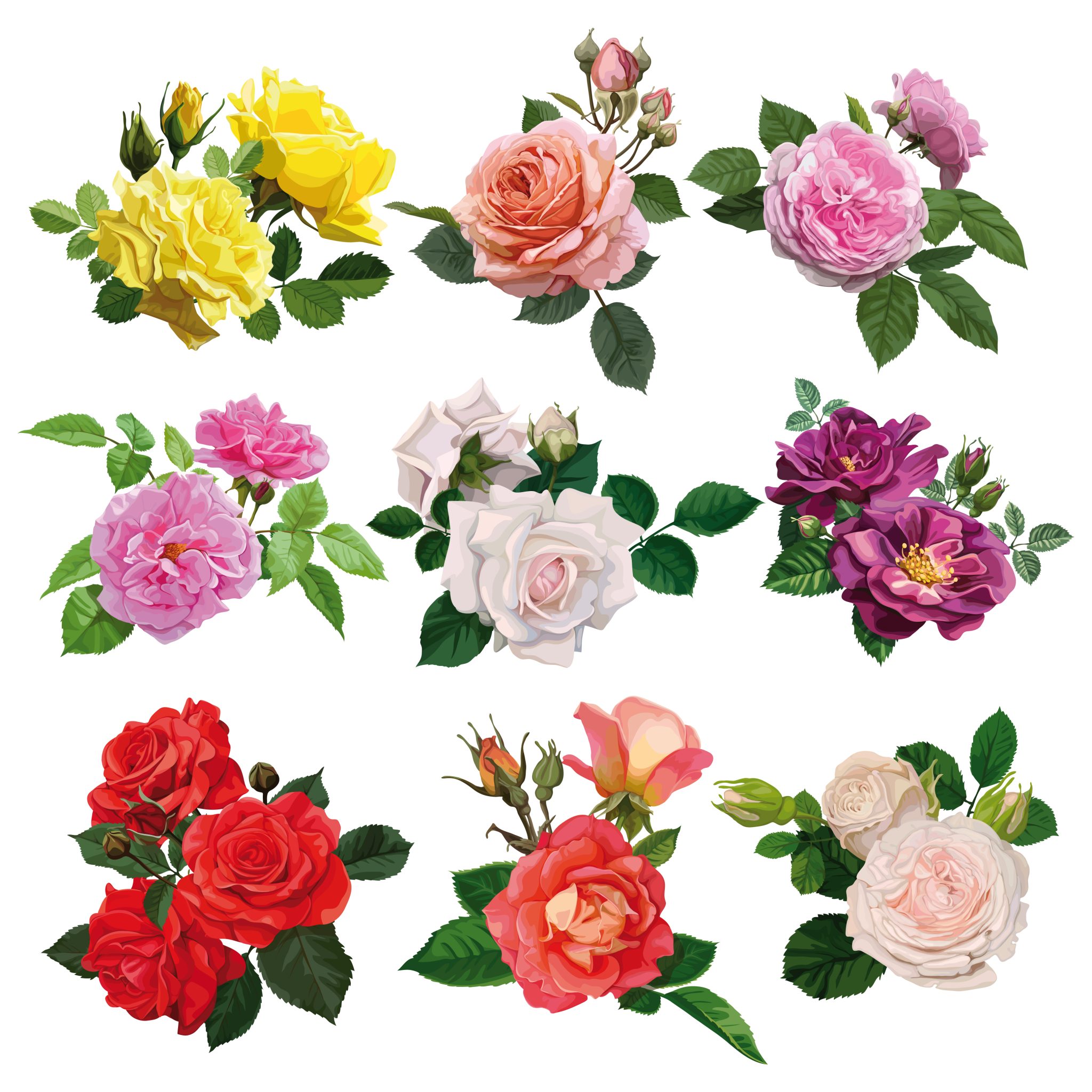
Bee Myth Busting
Bees avoid mint plants because of their smell. False. The minty fragrance emitted by plants in the mint family does NOT deter bees from visiting mint plants when in bloom.
Mint
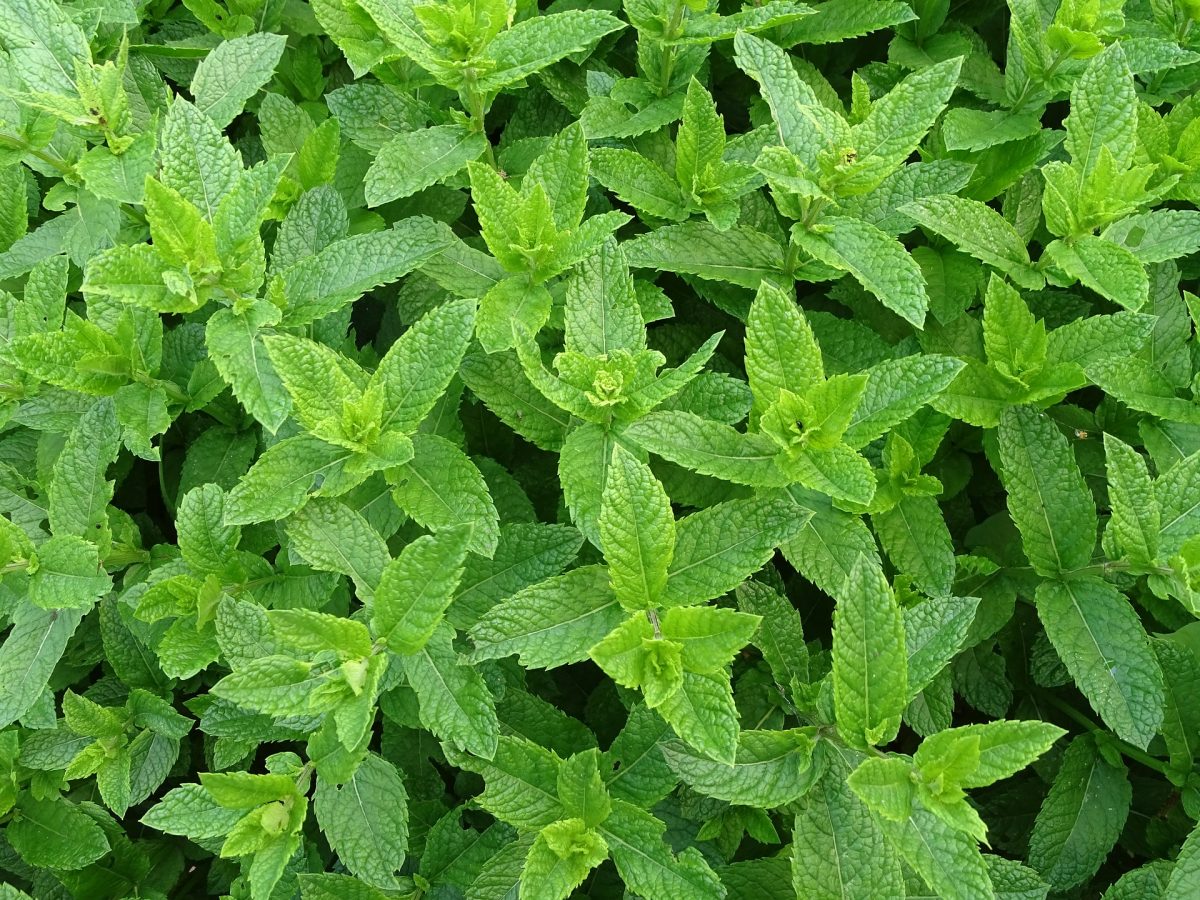
There seems to be some confusion about whether bees love or hate this plant online. It has been said that bees and wasps do not like the smell of peppermint, but there is little hard (or even anecdotal) evidence to support this claim. After doing some thorough research, I’ve discovered that bees are actually very attracted to plants in the mint family. This includes plants that emit a similar minty smell, such as pennyroyals. Honeybees will frequent mint blooms starting in mid-summer.
The best way to keep bees at bay may be to simply cut off any mint flowers as they bloom. This will cause the plant to produce more leaves, perfect for tea and mint mojitos! Word of caution: Mint tends to grow rapidly and can easily take over a garden if left to its own devices. It’s often best to keep this plant contained in a pot.
Bees do not like basil. False. Honey bees actually love basil flowers for their nectar and pollen stores.
Bees do not like roses. Partly false. Bees do like roses, but there are some varieties of roses that they will avoid because of their low nectar and pollen stores.
Bees tend to avoid the evening primrose (Primula alpicola). False. Many bee species visit the evening primrose. The small and shiny sweat bee has even evolved a specialized body part that is more efficient in handling the flower's stringy pollen.
Eucalyptus trees repel bees with its strong menthol-like smell. False. Eucalyptus blooms year-round, so you will always find honey bees gathering large amounts of nectar to store in their hive for winter.
Plants that Bees Love
Here is a quick list of some plants that bees are most attracted to:
- Angelica
- Basil
- Beebalm
- Black-eyed susans
- Borage
- Catnip
- Chamomile
- Comfrey
- Echinacea
- Forget-me-nots
- Four o’clocks
- Foxglove
- Gaillardia
- Goldenrod
- Heliotrope
- Honeysuckle
- Hyssop
- Jasmine
- Joe-pye weed
- Lavender
- Lemon balm
- Lily of the valley
- Nasturtium
- Nicotiana
- Marjoram
- Oregano
- Pennyroyal
- Penstemon
- Phlox
- Rosemary
- Sage
- Soapwort
- Sunflowers
- Swamp milkweed
- Thyme
- Valerian
- Wild indigo
- Yarrow
- Zinnia
- About the Author
- Latest Posts
I strive to paint vivid landscapes with my words, bringing the magic of far-off lands and enchanting aromas to life for my readers. Combine passion for exploration and the art of gastronomy in an unending ode to the senses. When I’m not traversing the globe, I find solace in the earth beneath my fingertips, tending to my garden and working on projects around my verdant oasis. MK Library serves as a beacon, guiding fellow travelers and homebodies alike to embrace sustainability, nurturing both our planet and our souls with purpose. Full Bio.

